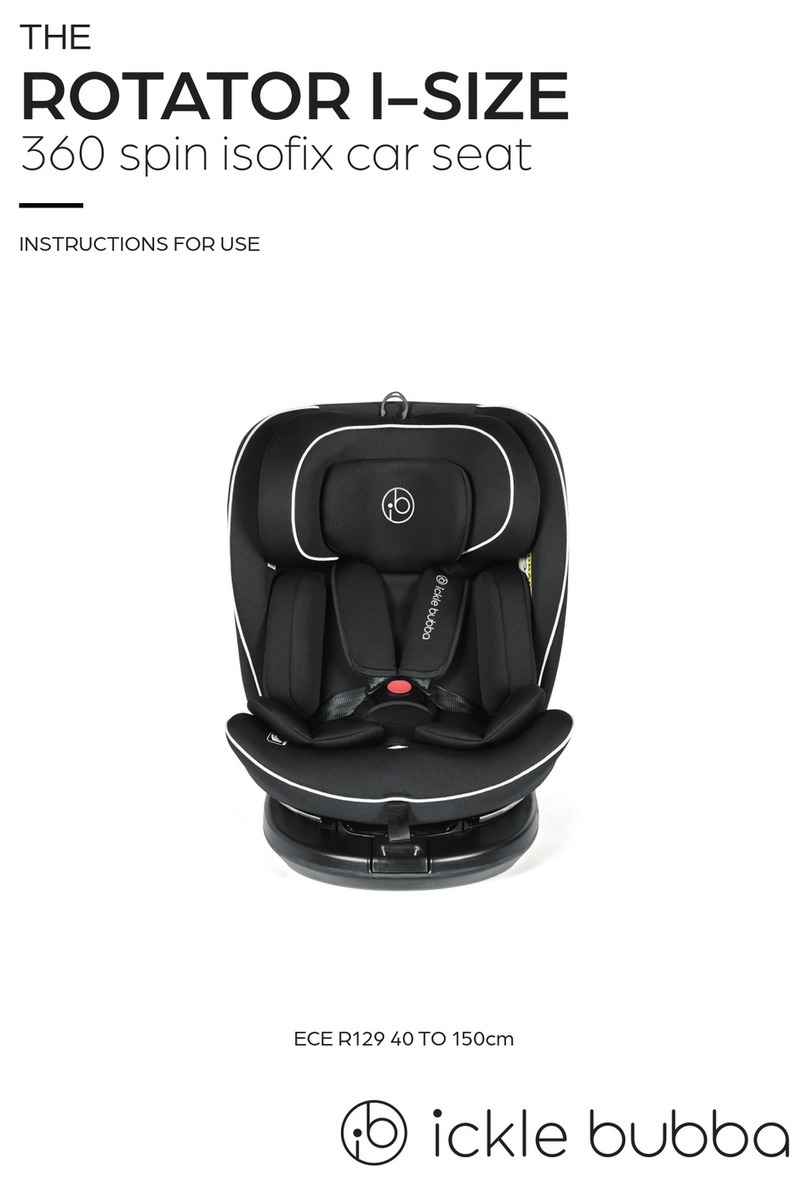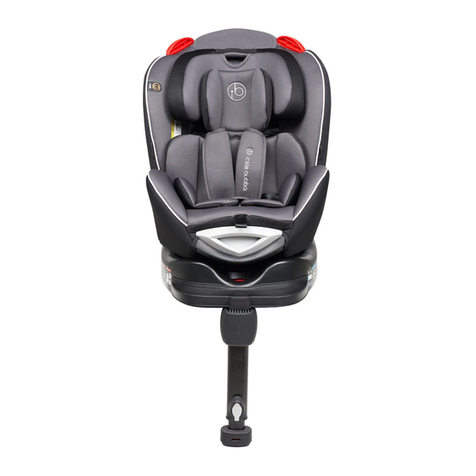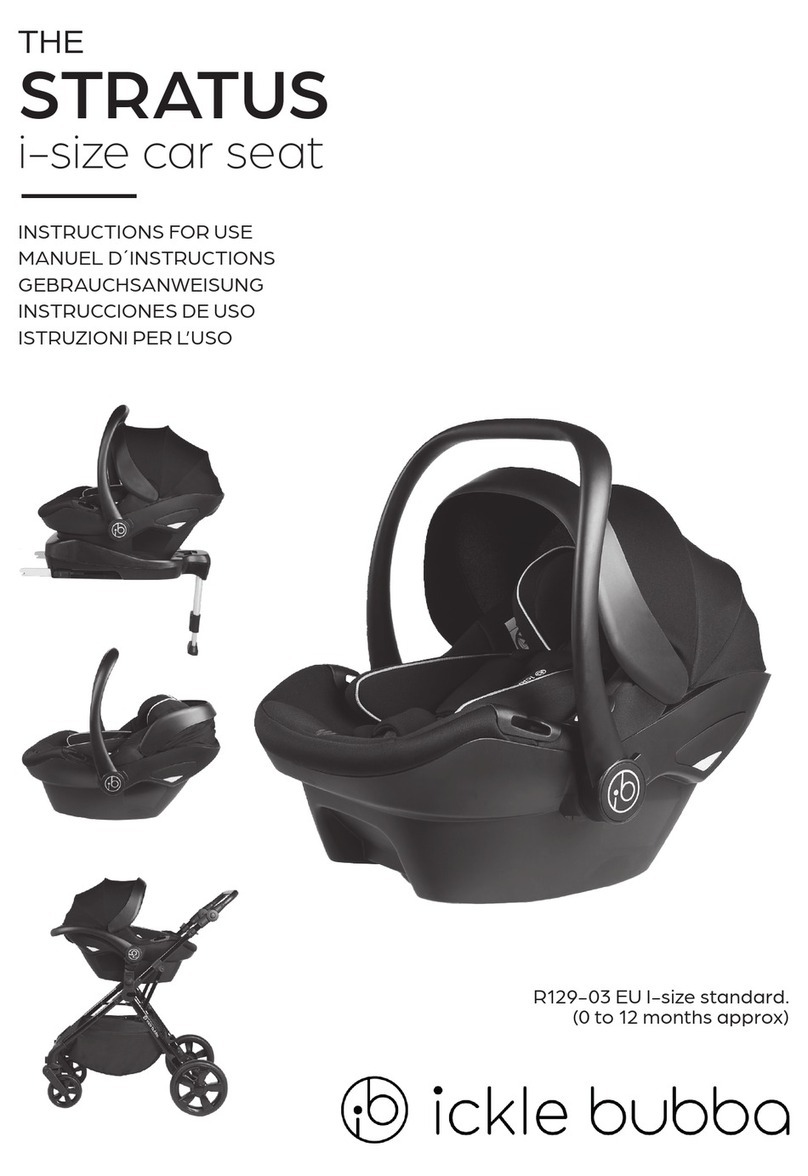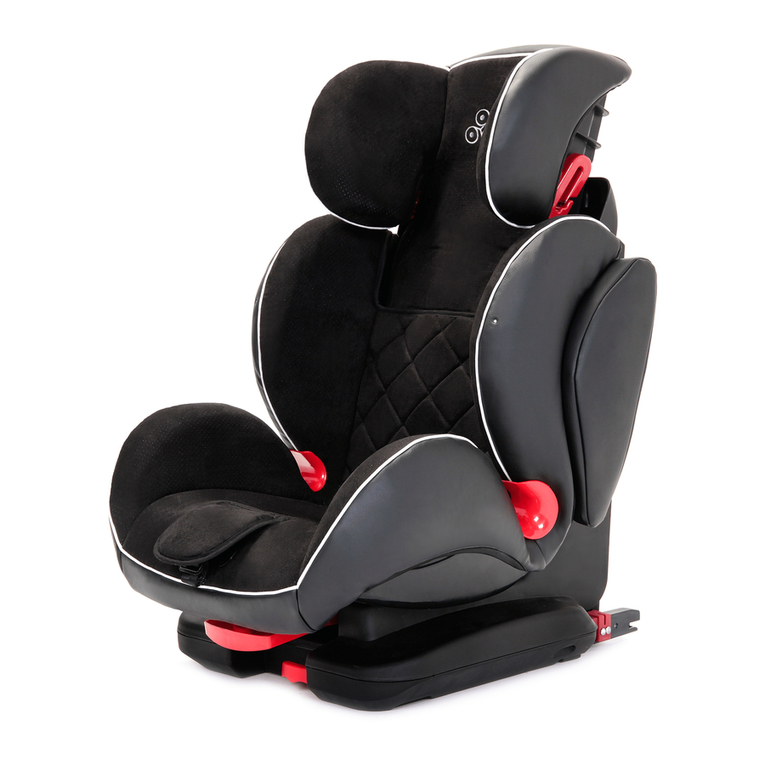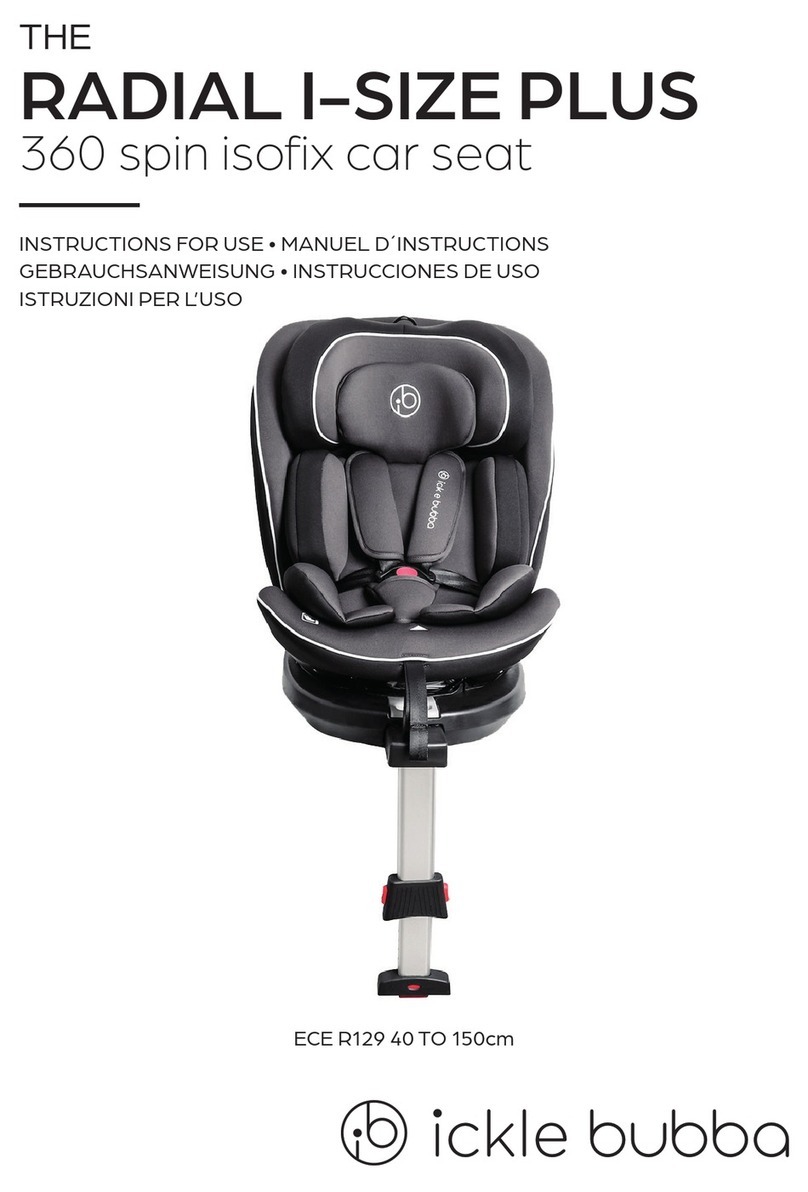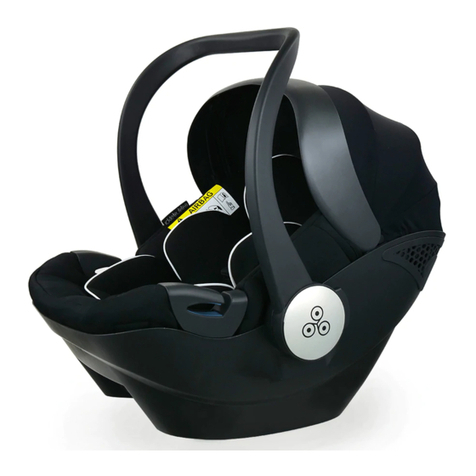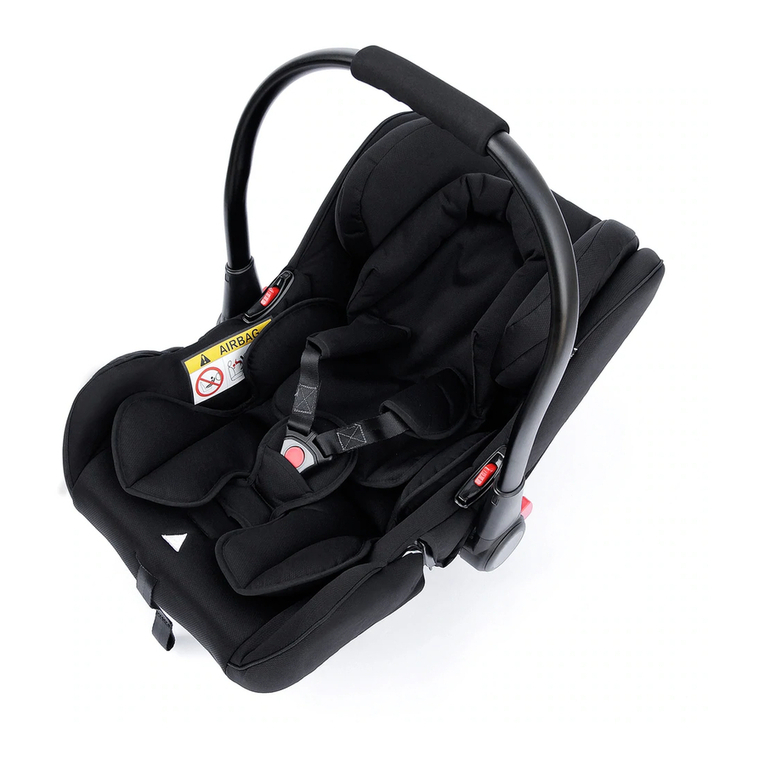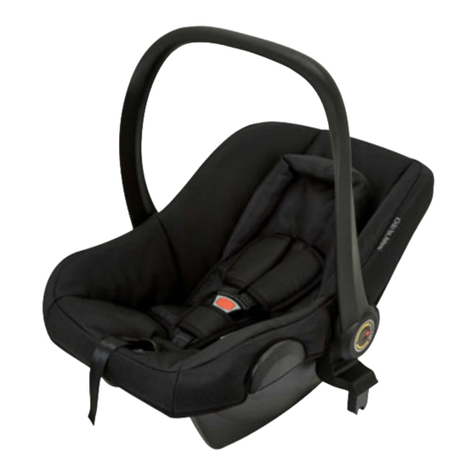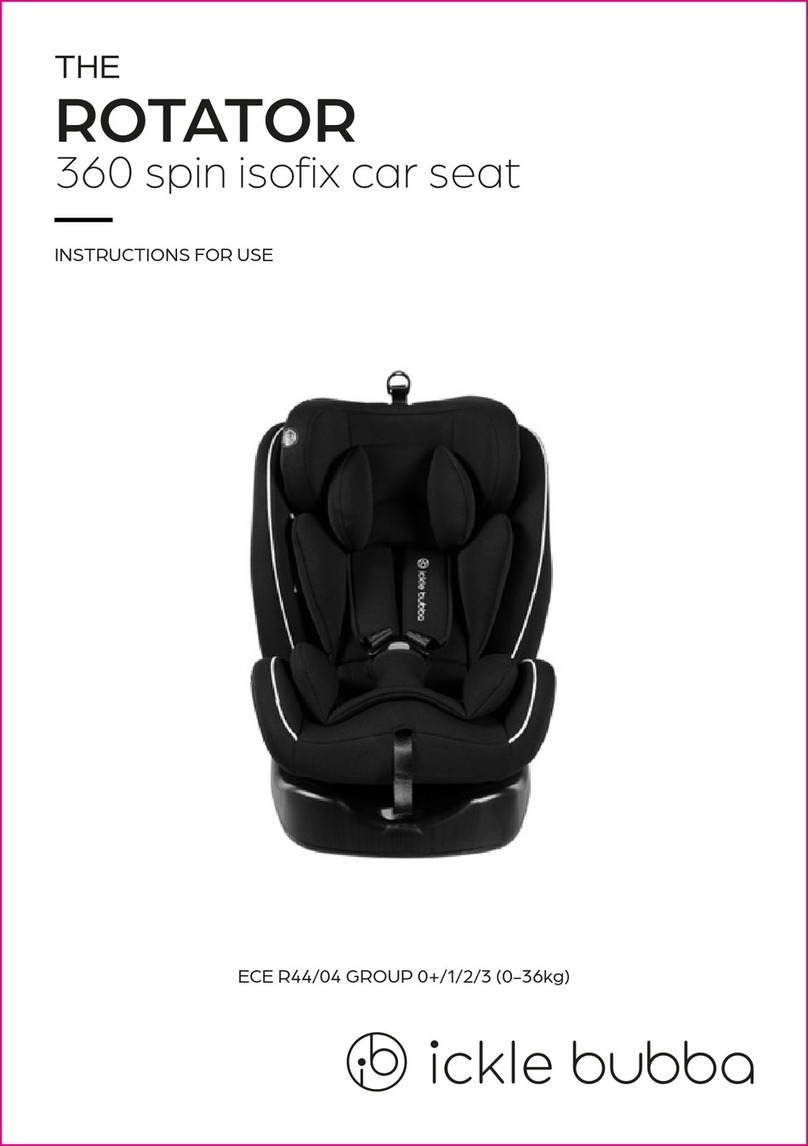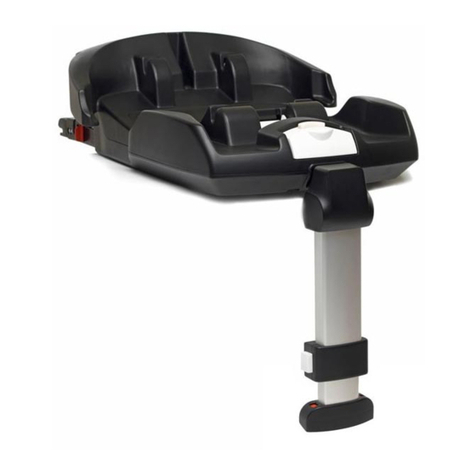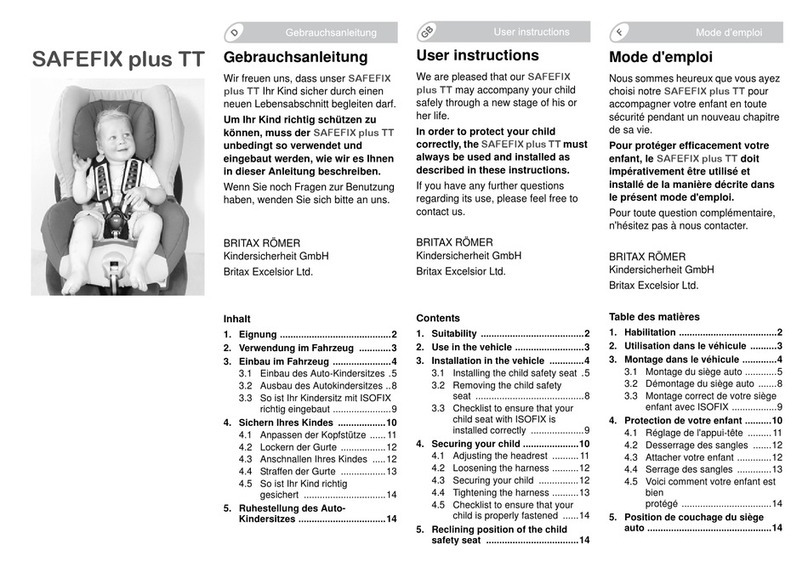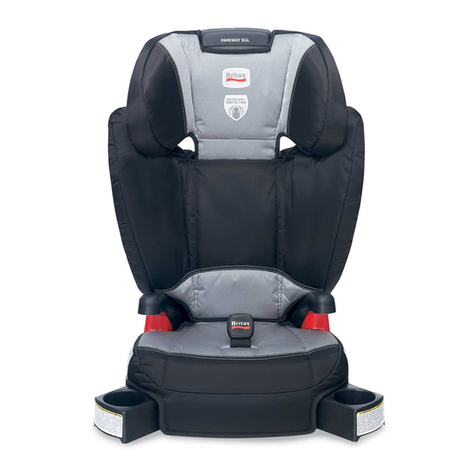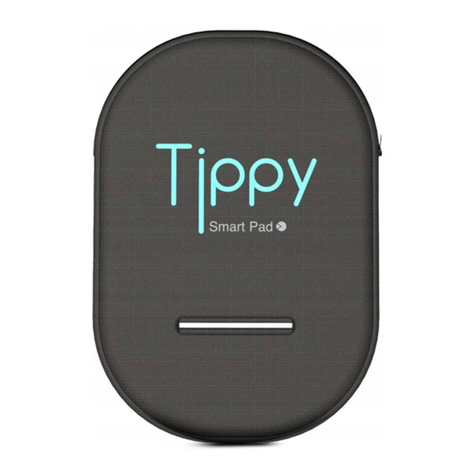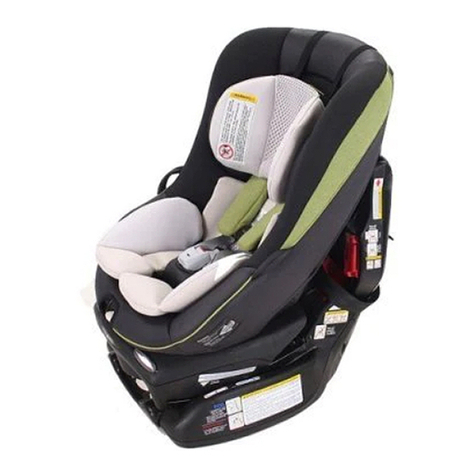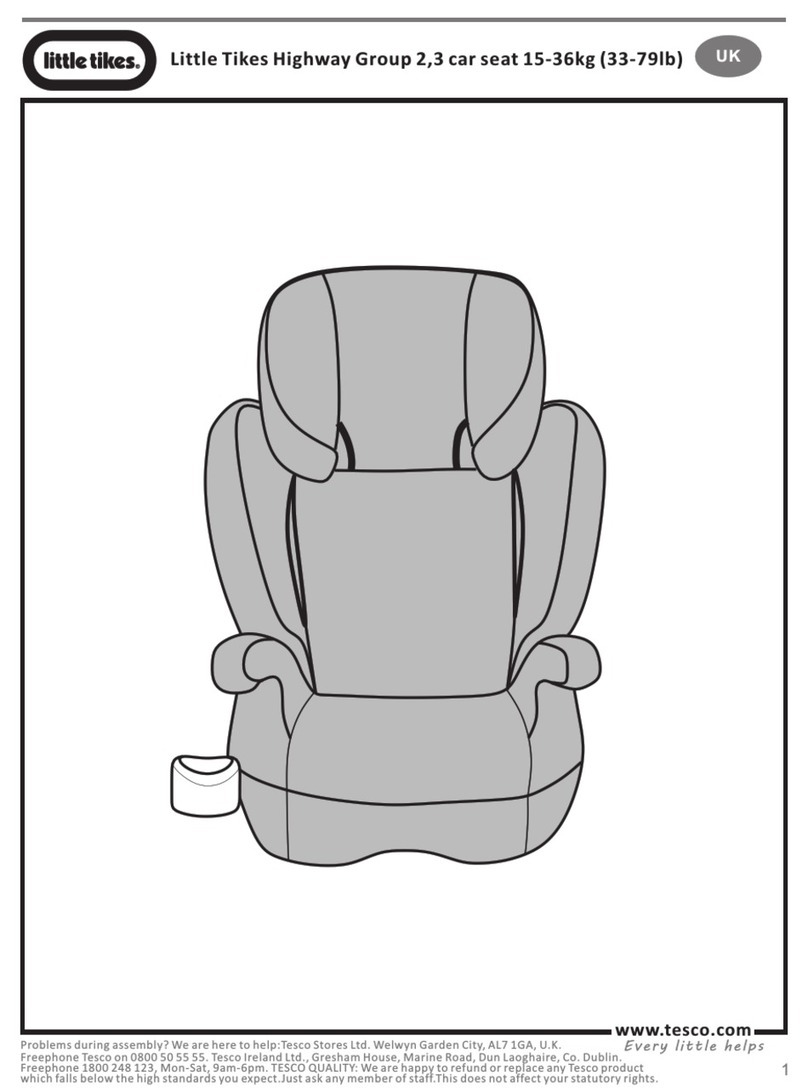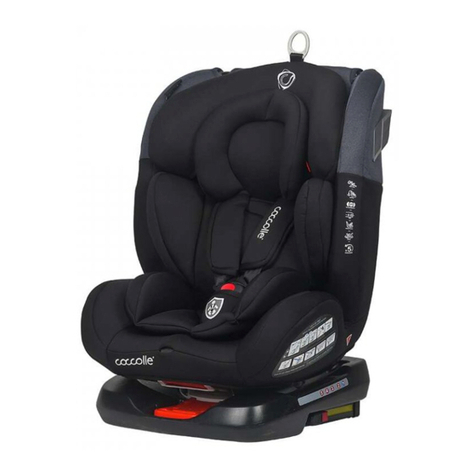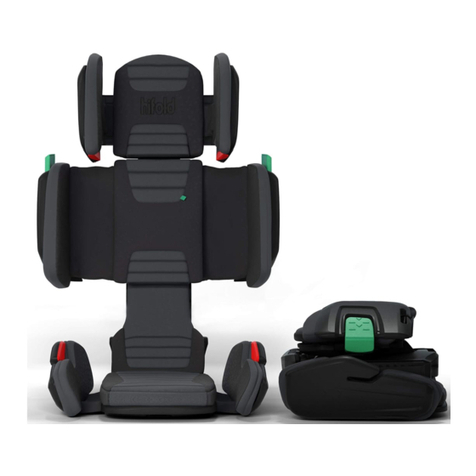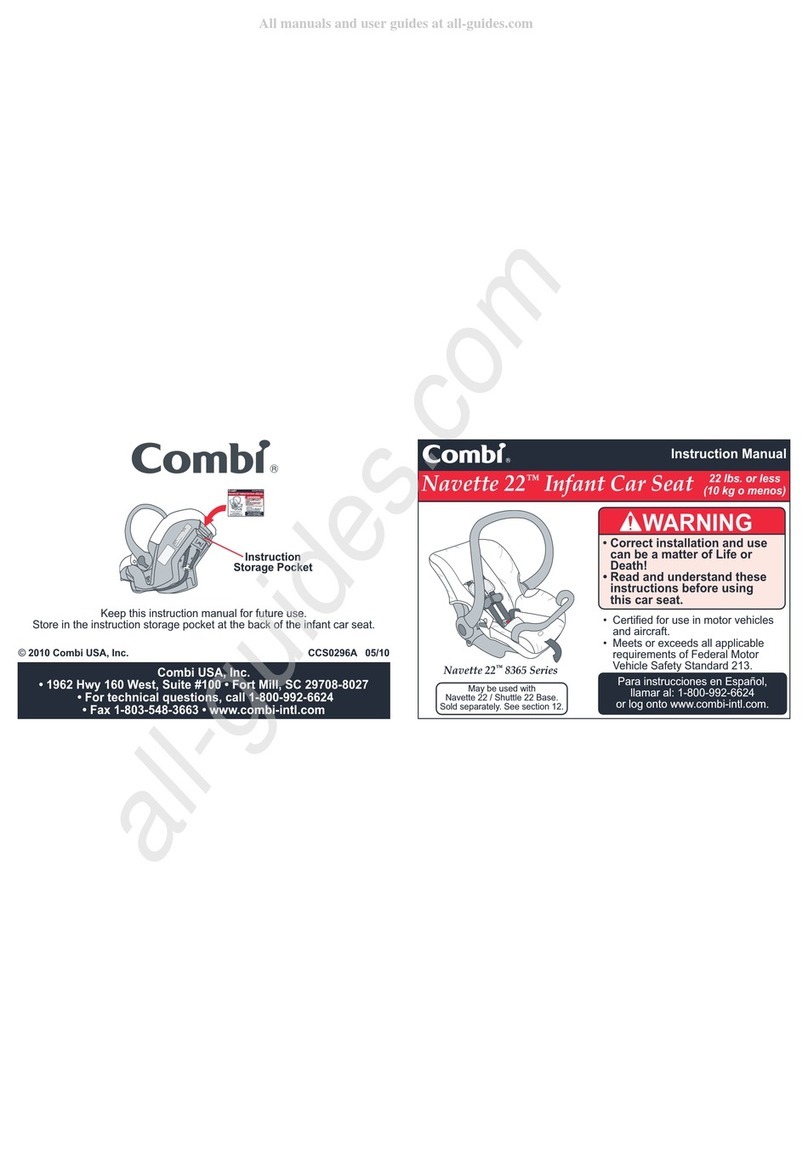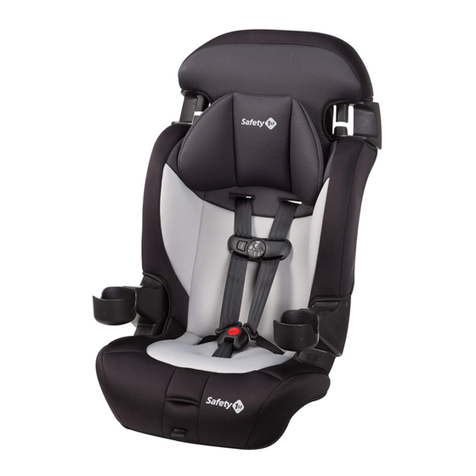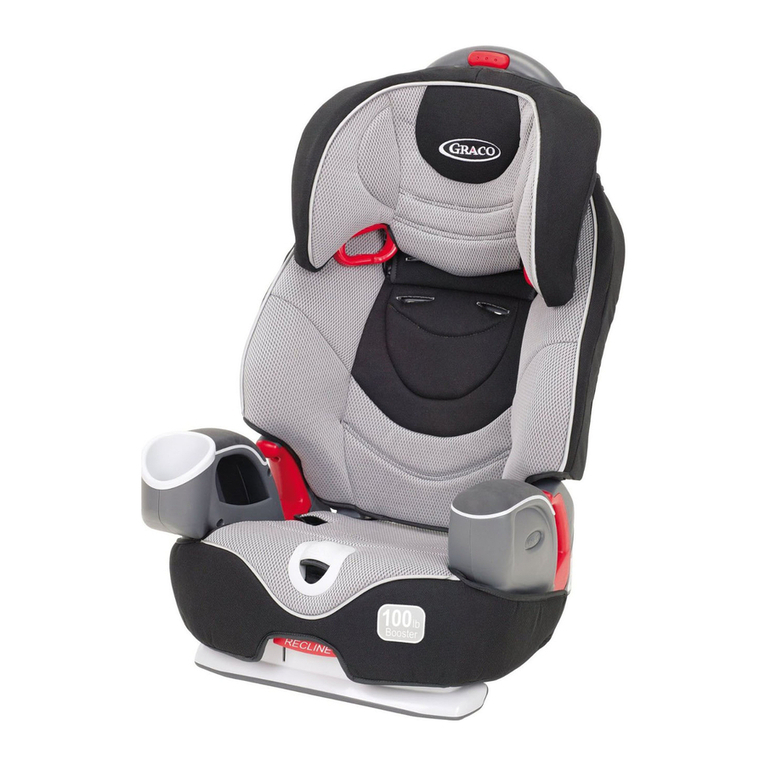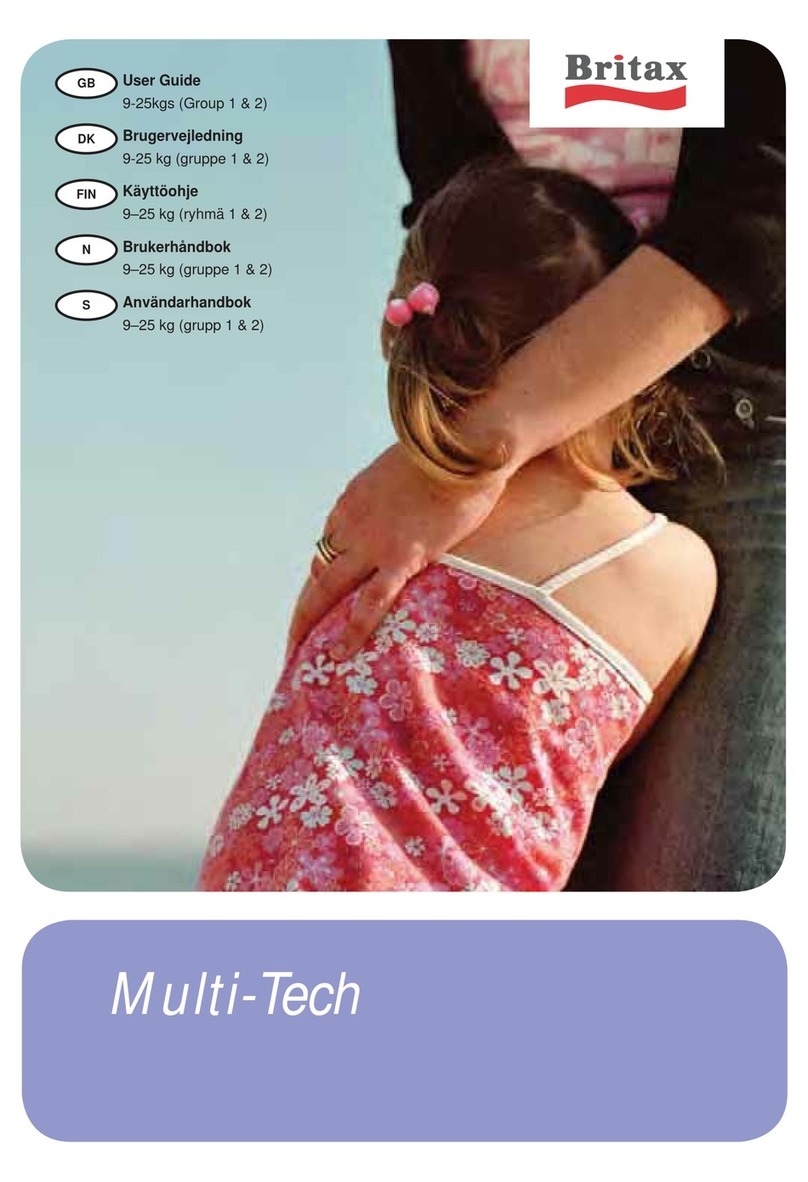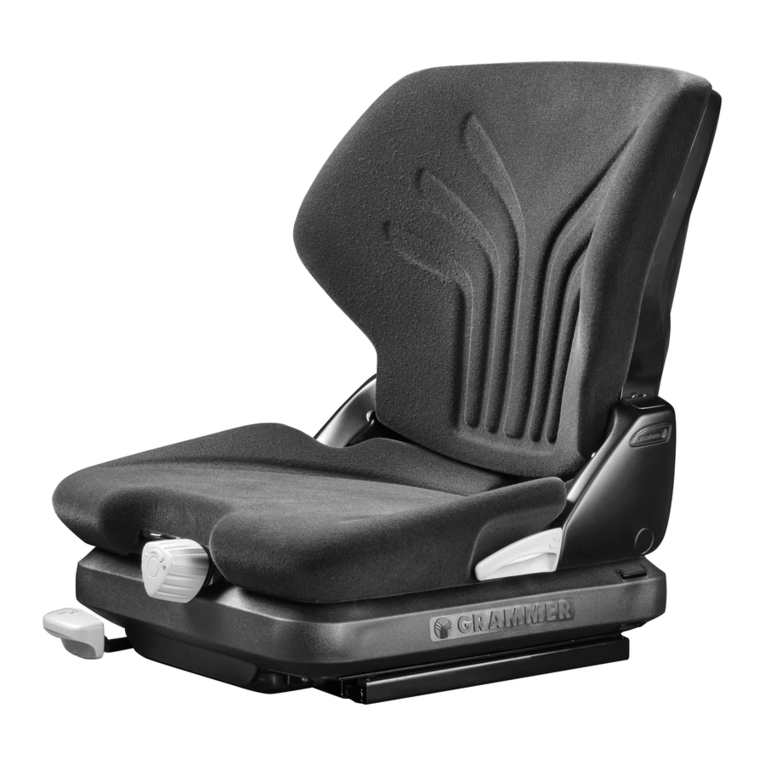
IMPORTANT!
IMPORTANT! Read the instructions carefully before use and keep for future
reference. Install and use the child safety seat as described in the instruction
manual. Failure to do this could result in serious injury or death. Keep the
instructions together with the child restraint for future reference. This seat already
conforms to ECE R44/04 and it is classified as Group 0+ (birth-13kgs) rear-facing,
Group I (9-18kgs) which should be fastened by Isofix + base support leg. Group
II (15-25kg) which should be installed by Isofix + base support leg. This seat
should only be used in the vehicle which is equiped with Isofix + base support leg.
IMPORTANT! Because of potential medical issues inherent to low birth weight
and premature infants, always have a trained professional doctor or hospital staff
member assess the suitability of the child restraint prior to leaving the hospital or
using the child restraint. The seat cushion must be used in Group 0+ (birth-13kg).
WARNINGS!
WARNING: The correct routing of the seat belt is essential for your child’s safety.
Please see the Installation section. Never thread the belt in any other way.
A correctly adjusted harness is essential for your child's protection.
NEVER leave a child unattended in the car seat while in the car.
NEVER use the car seat on a seat equipped with a front airbag unless the airbag is
deactivated as this can result in the death or injury of the baby. This does not apply
to side airbags.
NEVER use the car seat without the backrest as it will not protect your child in the
event of an accident.
NEVER use this child restraint with any other base, except ones that the
manufacturer permits.
DO NOT leave your child in this restraint for extended periods of time.
DO NOT use a child safety seat with damaged or missing parts.
DO NOT use damaged or frayed harness straps or vehicle belt.
DO NOT use a child safety seat that has been in a crash. A crash can cause unseen
damage to the child safety seat.
DO NOT use a second-hand child seat or child seat whose history you do not know.
DO NOT use this child seat in the home. It has not been designed for home use and
should only be used in your car.
The seat must always be secured, even when not in use.
The rigid items and plastic parts of a child restraint must be located and installed
so that they are not liable, during everyday use of the vehicle, to become trapped
by a movable seat or in a door of the vehicle. Any straps holding the restraint to the
vehicle should be tight. Any straps restraining the child should be adjusted to the
child's body, and the straps should not be twisted.
It is important to ensure that any lap strap is worn low down, so that the pelvis is
firmly engaged.
It is dangerous to make any alterations or additions to the device without the
approval of a competent authority, and to not closely follow the installation
instructions provided by the child restraint manufacturer.
The chair should be kept away from sunlight, otherwise it may be too hot for the
child's skin.
Any luggage or other objects liable to cause injuries in the event of a collision should
be properly secured.
The child restraint must not be used without the cover. The seat cover should not
be replaced with any other than the one recommended by the manufacturer, as the
cover constitutes an integral part of the restraint performance.
If the position of the vehicle safety-belt buckle relative to the main load bearing
contact points on the child safety seat is unsatisfactory, please contact the
manufacturer.
Do not use any load bearing contact points other than those described in the
instructions and marked in the child restraint.
If the seat belt height is adjustable, adjust it to the lowest position.
3 4
